- อุปกรณ์
- เครนพิเศษ
- เครนอุตสาหกรรม
- รถเข็นรอกและรอก
-
เครื่องกระจายเครน
-
แม่เหล็กยกเครนแม่เหล็กไฟฟ้า
-

แม่เหล็กไฟฟ้ายกสำหรับการกลึงและการแขวนด้านข้าง
-

แม่เหล็กไฟฟ้ายกสำหรับแผ่นหนา
-

แม่เหล็กไฟฟ้าเฉพาะสำหรับการยกแผ่นเหล็ก
-

การยกแม่เหล็กไฟฟ้าสำหรับการยกแผ่นเหล็ก
-

แม่เหล็กไฟฟ้าแบบยกสำหรับรางหนักและเหล็กโปรไฟล์
-

แม่เหล็กไฟฟ้ายกสำหรับ Wier ความเร็วสูง (แถบขด)
-

แม่เหล็กไฟฟ้ายกสำหรับเหล็กเส้นและท่อเหล็ก
-

แม่เหล็กไฟฟ้าแบบยกสำหรับเหล็กเส้นมัดรวมและเหล็กโปรไฟล์
-

การยกแม่เหล็กไฟฟ้าสำหรับ Billet, Girder Billet และ Slab
-

แม่เหล็กไฟฟ้ายกสำหรับเศษเหล็ก
-
- เครื่องกระจายเครน
- คีมยกเครนและแคลมป์
-
แม่เหล็กยกเครนแม่เหล็กไฟฟ้า
- อะไหล่เครน
- โอนรถเข็น
10 ความล้มเหลวของระบบรอกไฟฟ้าที่ร้ายแรง: สิ่งที่คุณจำเป็นต้องรู้โดยด่วน
วันที่ : 23 ส.ค. 2567
สารบัญ
คนวันต่อวันมักจะเจ็บป่วยอยู่เสมอ คนเป็นโรคที่ไม่น่ากลัว น่ากลัวคือหาสาเหตุของโรคไม่เจอ และไม่สามารถรักษาด้วยยาที่ถูกต้องได้ ด้วยเหตุผลเดียวกัน เครื่องจักรและคนยกของตราบใดที่วันต่อวันจะมีข้อผิดพลาดหลากหลาย ไม่สามารถหาสาเหตุของความล้มเหลวได้ จะไม่สามารถแก้ไขปัญหาได้ ดังนั้นจึงอาจทำให้เกิดอันตรายและการทำลาย อุปกรณ์เสียหายและเกิดความสูญเสียในกรณีที่เกิดอุบัติเหตุ ในบทความนี้ การใช้เครื่องจักรในชีวิตประจำวัน รอกไฟฟ้า ความล้มเหลวมักจะปรากฏในการวิเคราะห์สาเหตุของปัญหาและเสนอวิธีการรักษาที่สอดคล้องกัน
1. สาเหตุที่รอกไฟฟ้าเสีย: มอเตอร์ไร้โหลดไม่สามารถสตาร์ทได้
ก. แหล่งจ่ายไฟของมอเตอร์ไม่ได้เชื่อมต่อ หลังจากตรวจสอบและยืนยันแล้ว ให้เชื่อมต่อแหล่งจ่ายไฟทันที
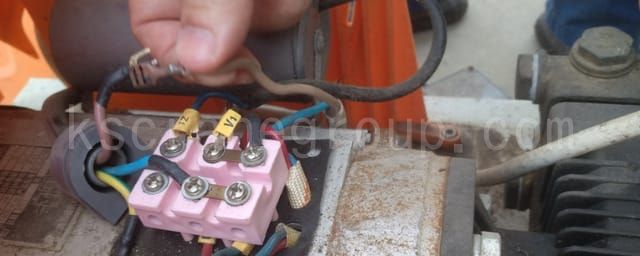
ข. ปุ่มสตาร์ทเสีย คอนแทคเตอร์ไม่ดี หรือฟิวส์คอนแทคเตอร์และส่วนประกอบอื่นๆ เสียหายหรือล้มเหลว เราต้องซ่อมแซมและเปลี่ยนส่วนประกอบไฟฟ้าที่เกี่ยวข้อง
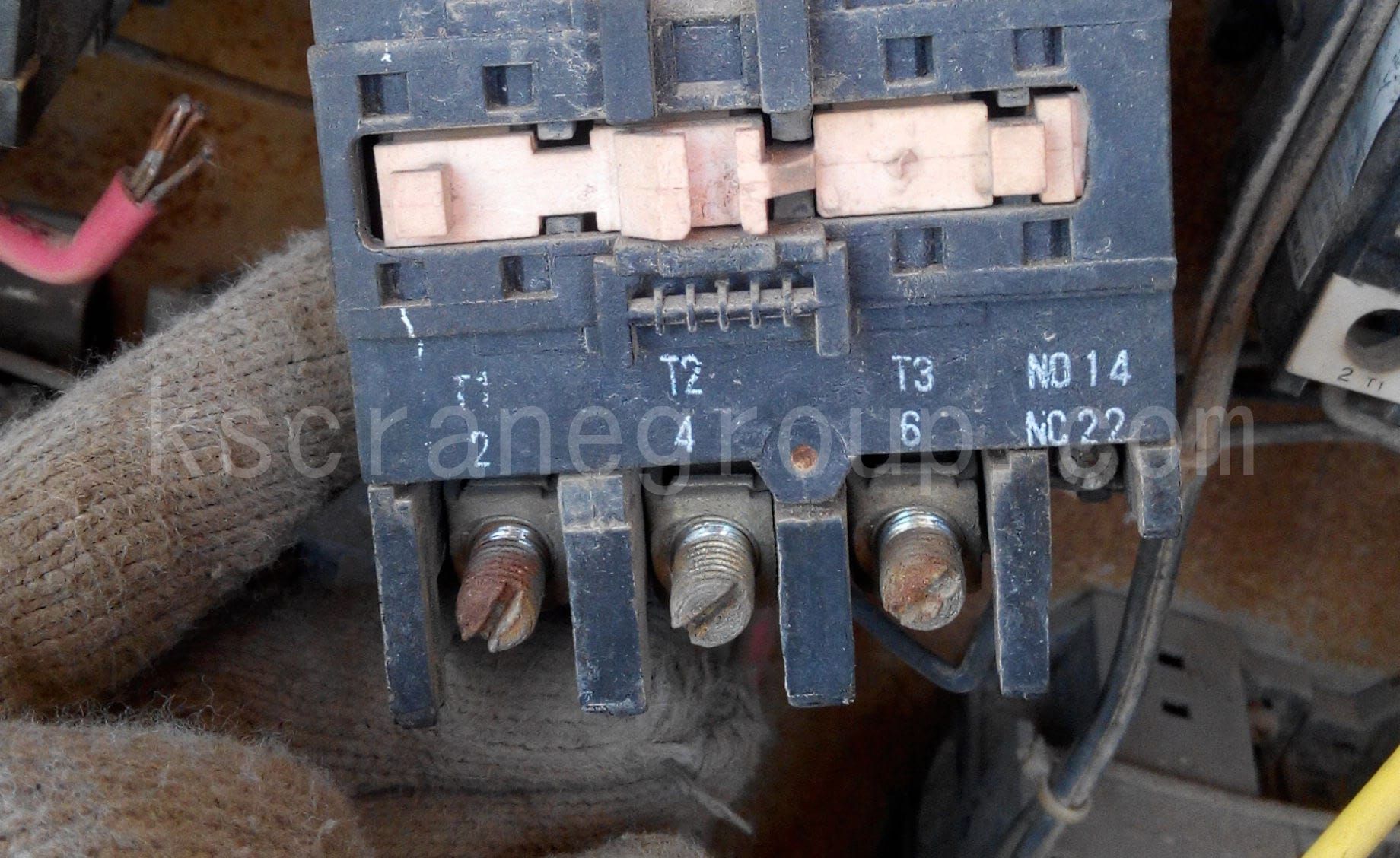
c. ตัวจำกัดไม่ได้รับการรีเซ็ต สายไฟของปุ่มสตาร์ทชำรุดหรือหลุด ให้รีเซ็ตตัวจำกัดทันที และสายไฟของปุ่มได้รับการยึดอย่างแน่นหนา

2. สาเหตุที่รอกไฟฟ้าเสีย: สวิตช์บนฝ่ามือของรอกไฟฟ้าที่จุดมือกดแล้วปุ่มสตาร์ทหลังจากรอกไม่ตอบสนอง
ก. เมื่อกดปุ่มสตาร์ทแล้วจะไม่มีเสียง “ติ๊ก” แสดงว่ารอกไฟฟ้าที่ต่อกับแหล่งจ่ายไฟไม่ถึงแรงดันไฟฟ้าที่กำหนดของรอกไฟฟ้าหรือแหล่งจ่ายไฟไม่ได้เชื่อมต่อ ก่อนอื่น ให้ตรวจสอบว่าสวิตช์ควบคุมไฟฟ้าปิดอยู่หรือไม่ โดยดูจากไฟบอกสถานะสวิตช์เพื่อดูว่าแหล่งจ่ายไฟเชื่อมต่ออยู่หรือไม่ และในทางกลับกัน แสดงว่าไม่ได้เชื่อมต่ออยู่
ข. ปุ่มสตาร์ทเสียหรือสัมผัสไม่ดี ให้ยกเครื่องและเปลี่ยนชิ้นส่วนที่เกี่ยวข้อง
c. สวิตช์ควบคุมไฟฟ้าถูกปิด และฝ่ามือของสวิตช์เมื่อกดปุ่มเริ่มต้น | ไม่มีเสียง "ป๊อป" อาจเป็นรอกไฟฟ้าหลัก ไฟฟ้าวงจรควบคุมไม่ได้เชื่อมต่อ ตรวจสอบก่อนว่าการตัดสาย การสัมผัสที่ไม่ดี และความเสียหายทางไฟฟ้าทำให้วงจรควบคุมหลักหรือไม่ ก่อนซ่อมแซม ต้องสังเกตว่า เพื่อป้องกันไม่ให้ไฟฟ้าเปิดขึ้นกะทันหัน อุบัติเหตุจากการหมุนของมอเตอร์ คุณควรดึงสวิตช์ควบคุมไฟฟ้าของมอเตอร์รอกลงก่อน ตัดแหล่งจ่ายไฟ เฉพาะแหล่งจ่ายไฟวงจรควบคุมหลัก แตะปุ่มเริ่มต้นและปุ่มหยุดเบาๆ เพื่อตรวจสอบว่าเกิดจากหน้าสัมผัสสายหรือปัญหาตัวควบคุมไฟฟ้าหรือไม่ เฉพาะในวงจรควบคุมหลักเท่านั้น เพื่อยืนยันว่าไม่มีสิ่งกีดขวาง ให้เรียบ ก่อนที่จะลองอีกครั้ง
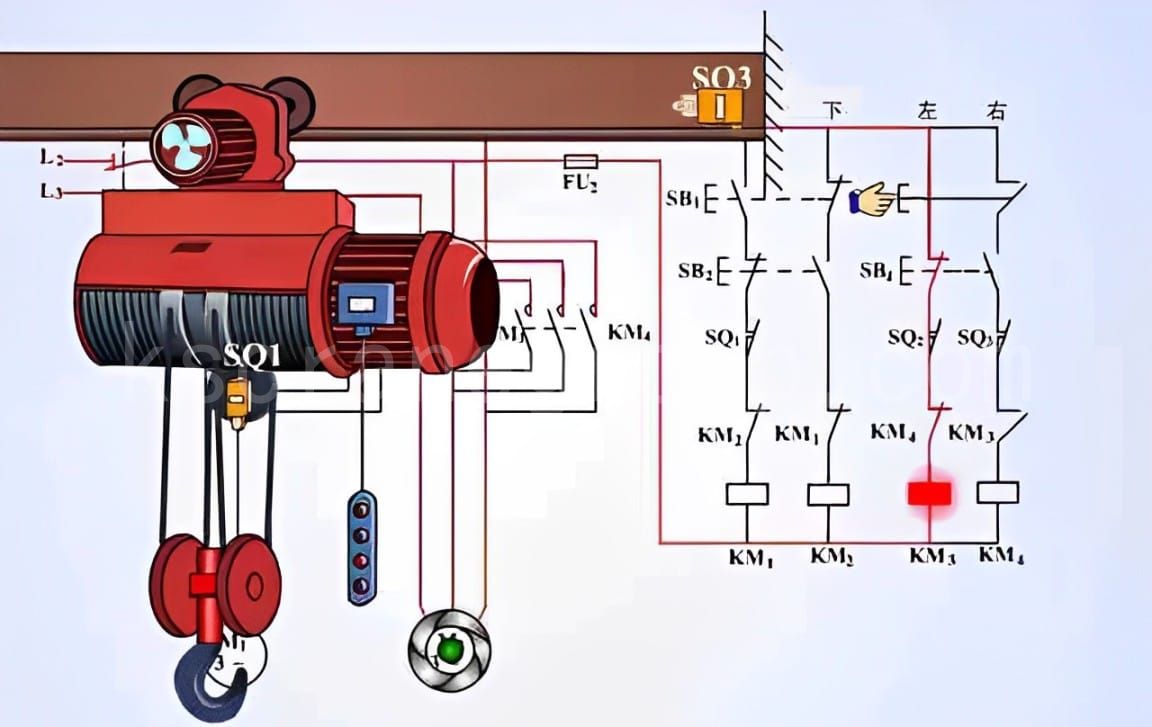
ง. แรงดันไฟฟ้าของมอเตอร์รอกไฟฟ้าต่ำกว่าแรงดันไฟฟ้าที่กำหนดของรอกทำงาน ส่งผลให้รอกไม่สามารถทำงานได้อย่างถูกต้อง เฉพาะเมื่อแรงดันไฟฟ้ากลับสู่แรงดันไฟฟ้าที่กำหนดเท่านั้น ก่อนทำงานยก บางครั้งแม้ว่าแรงดันไฟฟ้าของมอเตอร์จะถึงแรงดันไฟฟ้าที่กำหนด แต่ก็ยังไม่สามารถยกได้ เราต้องพิจารณาว่ามอเตอร์ไหม้หรือไม่ รอกไม่ได้ใช้งานเป็นเวลานานหรือไม่ ทำให้ล้อเบรกและฝาครอบด้านท้ายเป็นสนิมหรือมอเตอร์กวาดพื้นอย่างรุนแรงและเหตุผลอื่น ๆ หลังจากตรวจสอบสถานการณ์แล้ว ควรยกเครื่องหรือเปลี่ยนมอเตอร์ใหม่เพื่อให้แน่ใจว่างานยกดำเนินการได้ตามปกติ ในเวลาเดียวกัน งานยกควรปฏิบัติตามมาตรฐานการยกของรอกอย่างเคร่งครัด เพื่อป้องกันความเสียหายต่ออุบัติเหตุจากรอกไฟฟ้า ยืดเวลาการทำงาน นอกจากนี้ ในระหว่างการใช้งาน ห้ามดึงลากเฉียงอย่างเด็ดขาด อาจทำให้เครนรับน้ำหนักเกินได้ ยิ่งร้ายแรงมากขึ้น จะทำให้ลวดสลิงในถังหมุนรอบ ๆ ม้วนหรือม้วนบนถัง ดึงลวดสลิงออก และเกิดอุบัติเหตุ
3. สาเหตุที่รอกไฟฟ้าเสีย : การทำงานของรอกไฟฟ้ามักจะมีเสียงผิดปกติและมีเสียงรบกวนต่างๆ ตามมา
ก. มอเตอร์เริ่มทำงานมีเสียงผิดปกติเล็กน้อยและมีเสียงดัง เราต้องตรวจสอบว่ามีการยกเกินพิกัดหรือไม่ แรงดันไฟฟ้าของแหล่งจ่ายไฟต่ำเกินไป หรือเบรกไม่เปิดเต็มที่ หากจะลดความสามารถในการยกในช่วงที่กำหนด ให้ปรับแรงดันไฟฟ้าให้สอดคล้องกับข้อกำหนด ปรับระยะห่างของเบรก และแก้ไขปัญหาเสียก่อนจึงจะดำเนินการยกได้
ข. เมื่อมอเตอร์มีเสียง "ฮัม" ดังและเบาเป็นประจำ ให้หยุดทำงานทันที ให้ตรวจสอบว่าแหล่งจ่ายไฟหรือมอเตอร์ทำงานแบบเฟสเดียวหรือไม่ ให้ส่งเสียง "ฮัม" ดัง "ตุบๆ" เพื่อตรวจสอบว่าตลับลูกปืนเสียหายหรือไม่ เมื่อมอเตอร์ทั้งหมดส่งเสียง "บัซ" ดังมาก ให้หยุดทำงานทันที ตรวจสอบว่าแกนข้อต่อไม่ถูกต้องหรือมอเตอร์ไม่มีการเคลื่อนที่เล็กน้อย หลังจากกำจัดข้อผิดพลาดแล้วจึงทำงานต่อได้
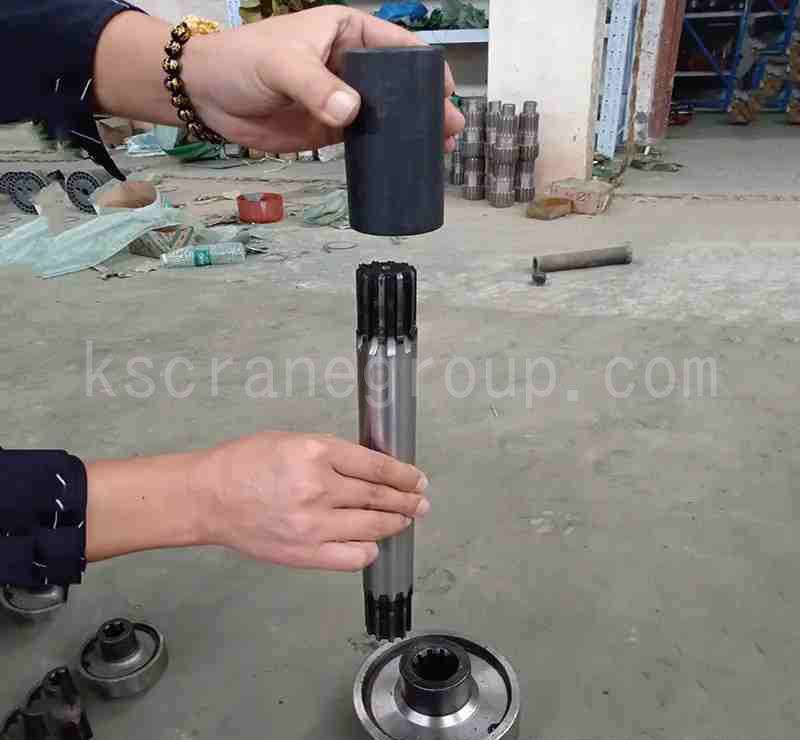
c. เสียงเกียร์ลดเกียร์ ควรหยุดทันที การตรวจสอบเกิดจากการขาดน้ำมันของเกียร์ลดเกียร์ การหล่อลื่นไม่ดีหรือความเสียหายของเกียร์ และการสึกหรอที่เกิดจากสาเหตุร้ายแรง ให้เติมน้ำมันในปริมาณที่เพียงพอหรือเปลี่ยนน้ำมันใหม่ และซ่อมแซมหรือเปลี่ยนเกียร์ ลูกปืน และชิ้นส่วนเกียร์อื่นๆ มิฉะนั้น เกียร์ลดเกียร์จะไม่เพียงแต่ส่งเสียงดังขึ้นเท่านั้น แต่ยังทำให้เกียร์และลูกปืนสึกหรอมากเกินไปหรือเสียหาย ซึ่งเกิดจากการสึกหรอและการถูกทิ้ง
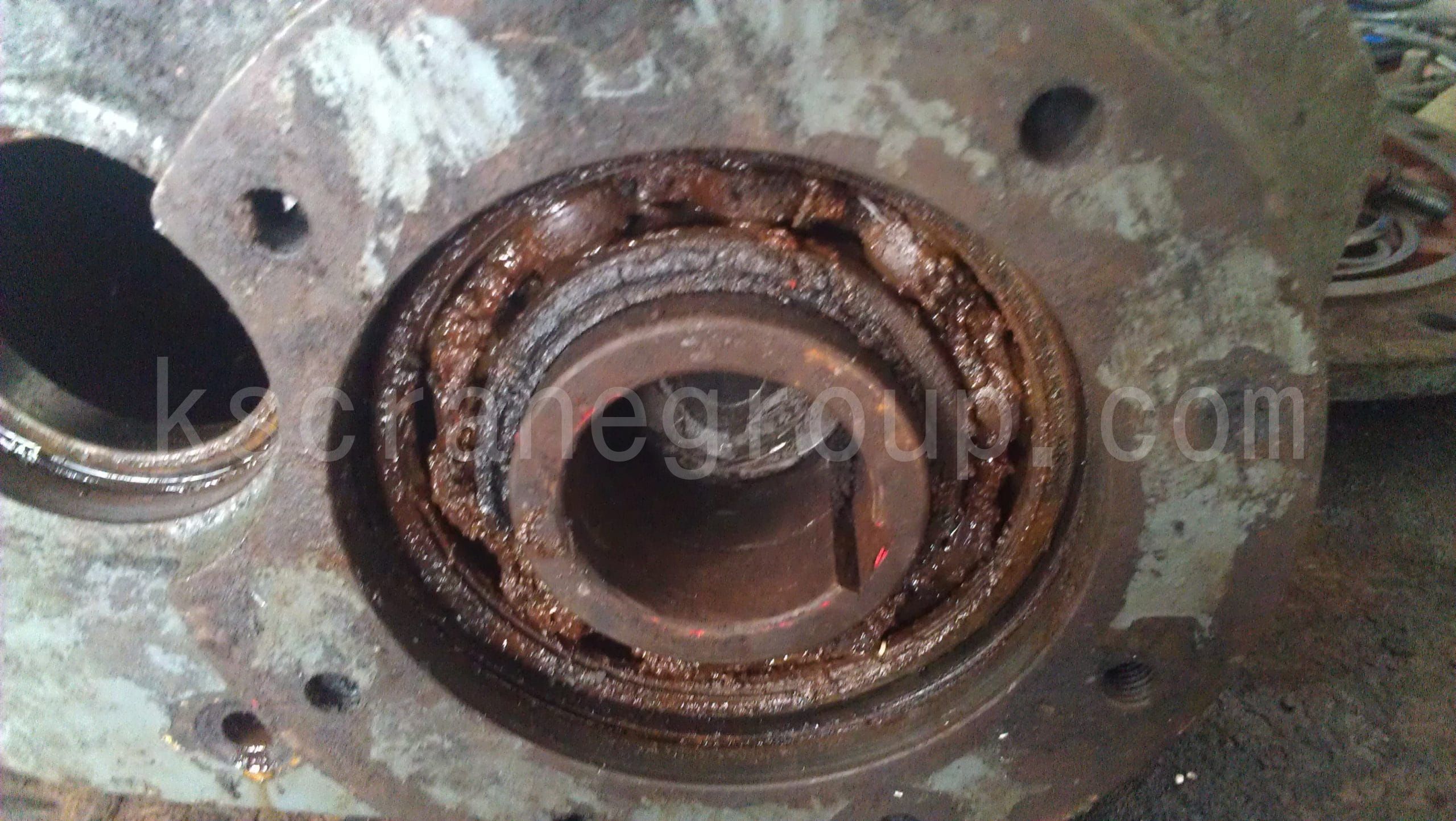
ง. เบรกจะส่งเสียงดังกึกก้อง ซึ่งเกิดจากแรงเสียดทานสัมพันธ์ระหว่างล้อเบรกและแหวนเบรกหรือการสัมผัสที่ไม่ดีระหว่างชิ้นส่วนที่สร้างขึ้น ตราบใดที่ยกเครื่องแหวนเบรกใหม่ ก็สามารถกำจัดเสียงที่ดังจนแสบแก้วหูได้
4. สาเหตุที่รอกไฟฟ้าเสีย: ระยะเลื่อนเกินมาตรฐานขณะเบรก
รอกไฟฟ้าไม่ได้ใช้งานเป็นเวลานาน แหวนเบรกสึกหรอ แรงดันสปริงลดลง แรงเบรกลดลง และเมื่อหยุดลง ระยะทางลงเกินมาตรฐาน สถานการณ์นี้ควรเป็นไปตามคำแนะนำของรอกใน "การตรวจสอบ การปรับแต่ง และข้อควรระวัง" เพื่อปรับน็อตเบรกใหม่ ห้ามปรับ ตรวจสอบ หรือซ่อมแซมเบรกระหว่างการทำงานของรอก ระยะเลื่อนเกินมาตรฐาน ก่อนอื่นให้ถอดแหวนเบรกออกและตรวจสอบน้ำมันบนพื้นผิวเบรก จะทำให้เบรกลื่น คราวนี้ให้ทำความสะอาดพื้นผิวเบรกให้ทั่วเพื่อคืนค่าสัมประสิทธิ์แรงเสียดทานของพื้นผิวเบรก เช่น หากแหวนเบรกหลวมหรือเสียหาย ให้เปลี่ยนแหวนเบรก หากแหวนเบรกไม่เสียหาย แต่การสัมผัสกรวยฝาครอบด้านหลังไม่ดี คุณควรค้นหาตำแหน่งของการสัมผัสที่ไม่ดี ขนถ่ายและซ่อมแซมเพื่อเพิ่มพื้นผิวสัมผัสเบรก ข้อต่อมอเตอร์แบบขันหลุด ข้อต่อของมอเตอร์รอกไม่ทำงานหรือติดขัด ซึ่งทำให้เอฟเฟกต์การเบรกของรอกไม่เสถียร และควรซ่อมแซมหรือเปลี่ยนด้วยข้อต่อใหม่ทันที หากสปริงแรงดันเบรกล้าหลังจากใช้งานเป็นเวลานานและไม่สามารถให้เอฟเฟกต์การเบรกที่เสถียรได้ ควรซ่อมแซมหรือเปลี่ยนส่วนประกอบที่เกี่ยวข้องทันที
5. สาเหตุที่รอกไฟฟ้าเสีย: มอเตอร์ร้อนเกินไป
หากมอเตอร์ร้อนเกินไปเนื่องจากรอกรับน้ำหนักเกิน ให้ลดน้ำหนักและยกตามความสามารถในการยกที่กำหนด หากไม่โอเวอร์โหลดยังคงร้อนเกินไป ให้ตรวจสอบตลับลูกปืนของมอเตอร์ที่เกี่ยวข้อง และดำเนินการตามขั้นตอนการทำงานที่เกี่ยวข้องอย่างเคร่งครัดตามข้อกำหนดที่เกี่ยวข้องของระบบการทำงานของมอเตอร์ หากระยะห่างของเบรกเล็กเกินไป มอเตอร์จะร้อนเกินไปเมื่อมอเตอร์ทำงาน ให้หยุดรถและปรับระยะห่างของเบรกให้ตรงตามข้อกำหนด
หากไม่ได้ขันสกรูข้อต่อให้แน่น ควรขันสกรูให้แน่นทันทีเพื่อแก้ไขข้อบกพร่อง ขณะเดียวกัน การใช้อุปกรณ์สตาร์ทและเบรกบ่อยครั้งจะทำให้มอเตอร์ร้อนเกินไป ดังนั้นควรลดการใช้อุปกรณ์สตาร์ทและเบรกบ่อยครั้งลง
6. สาเหตุที่รอกไฟฟ้าเสีย : ตัวจำกัดงานยกไม่ได้จำกัดตำแหน่ง
ก. เนื่องจากการยกลำดับเฟสแหล่งจ่ายไฟของตัวจำกัดขึ้นนั้นเชื่อมต่อไม่ถูกต้องหรือสายไฟไม่แน่นหนา ควรปรับใหม่ให้ตรงกับลำดับเฟสแหล่งจ่ายไฟที่ถูกต้อง การหลุดออกของสายไฟแหล่งจ่ายไฟจะได้รับการแก้ไขอย่างแน่นหนา
ข. เนื่องจากการหยุดของคันโยกจำกัดการคลายตัว ควรปรับเพื่อหยุดตำแหน่งของบล็อกและขันให้แน่น
7. สาเหตุที่รอกไฟฟ้าเสีย คือ เลื่อนมากหรือวิ่งโดยที่เบรคไม่อยู่
ก่อนอื่น ให้ตรวจสอบการสึกหรอของแหวนเบรก หากสึกหรอมาก ให้เปลี่ยนแหวนเบรกทันที ขณะเดียวกัน ให้ตรวจสอบว่าช่องว่างเบรกมีขนาดใหญ่เกินไปหรือไม่ หากใหญ่เกินไป ให้ปรับช่องว่างเบรกให้ตรงตามข้อกำหนดของกฎระเบียบช่องว่าง ประการที่สอง ให้ตรวจสอบว่าสกรูยึดปลายเพลามอเตอร์หรือปลายลูกปืนเฟืองหลวมหรือไม่ เช่น สกรูที่คลายออกให้ขันให้แน่น
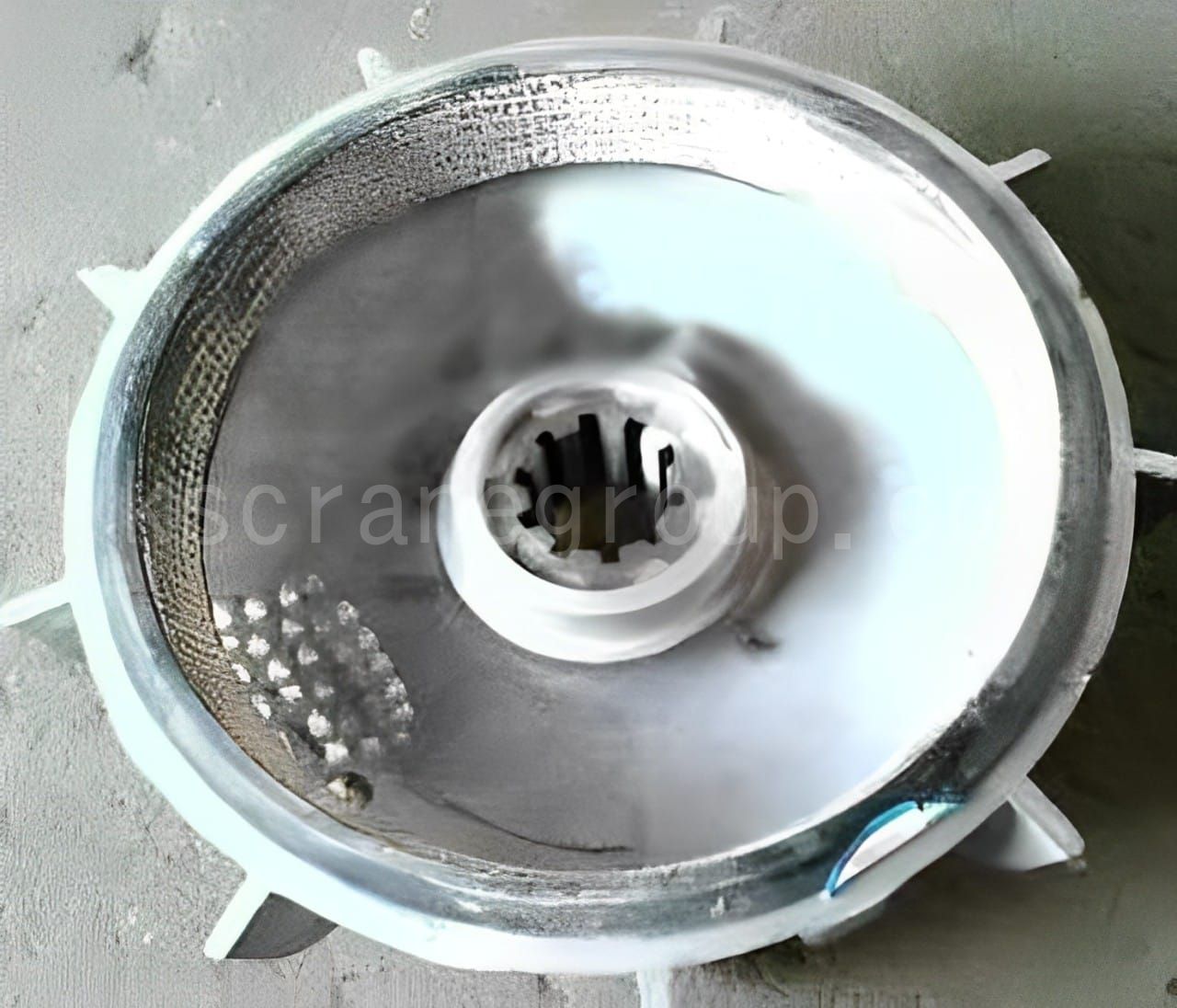
8. สาเหตุที่รอกไฟฟ้าเสีย: น้ำมันเกียร์ลดรั่วซึม
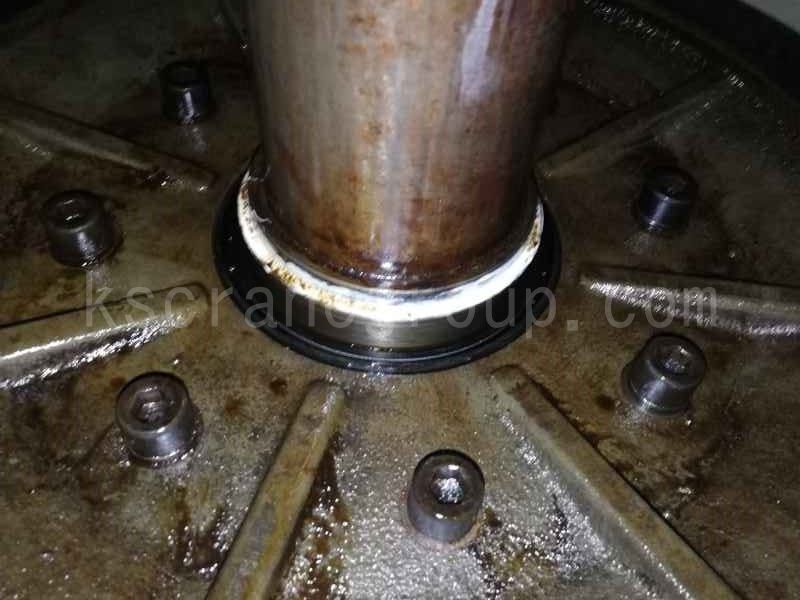
ก. การรั่วซึมของน้ำมันหรือการรั่วไหลที่ฝาครอบและกล่องเกียร์ระหว่างตัวถัง อาจเกิดจากไม่ได้ติดตั้งซีลให้เข้าที่หรือเกิดความเสียหายอันเกิดจากการถอดประกอบหรือเปลี่ยนซีลใหม่
ข. การรั่วซึมหรือการรั่วไหลของน้ำมันในข้อต่อลดเกียร์ อาจเกิดจากสกรูหลวม ให้ขันสกรูให้แน่นหลังจากปิดเครื่อง
c. การเติมน้ำมันมากเกินไปอาจทำให้ปริมาณน้ำมันไปอยู่ในตำแหน่งที่กำหนดได้
9. สาเหตุที่รอกไฟฟ้าเสีย: ปุ่มกดเสีย กดไม่รีเซ็ต
ก. สปริงปุ่มสึกหรอ ชำรุด ต้องเปลี่ยนสปริงให้ทันเวลา
ข. มีฝุ่นละอองและสิ่งสกปรกในปุ่มมากเกินไป ควรทำความสะอาดทันทีเพื่อให้ปุ่มสะอาดอยู่เสมอ
c. เบรกเกอร์หรือขั้วต่อไฟฟ้าสูญหาย ในครั้งนี้ควรเปลี่ยนสายเคเบิลหรือเดินสายใหม่
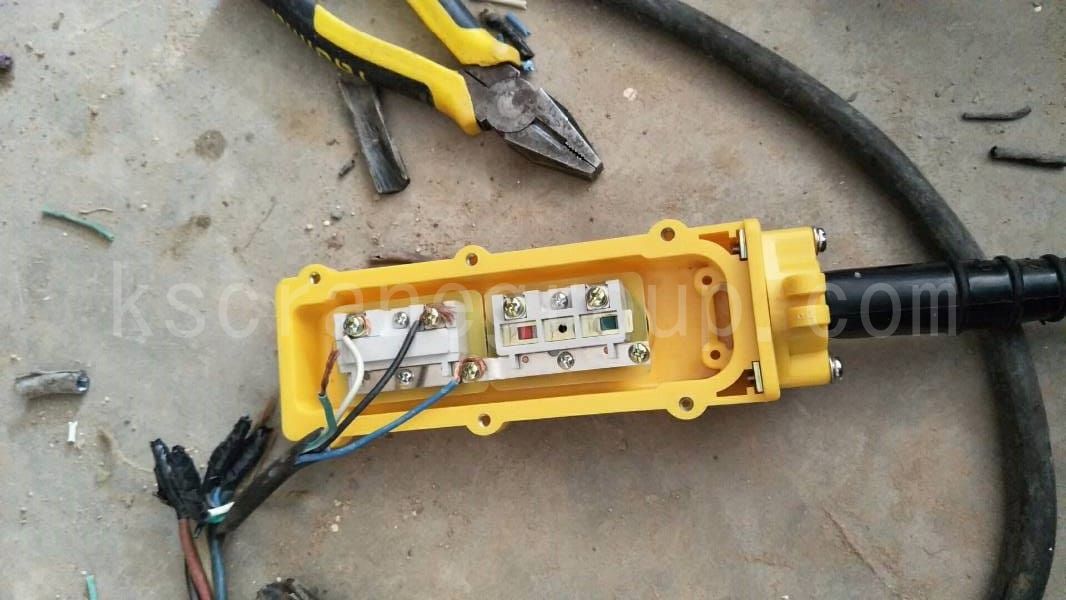
10. สาเหตุที่ทำให้รอกไฟฟ้าเสียหาย: ลวดสลิงสึกหรอ เสียรูป และขาด
ก. ลวดสลิงสึกหรอ ส่วนใหญ่จะแขวนเฉียงๆ เพื่อให้ลวดสลิงและเปลือกสึกหรอ เส้นผ่านศูนย์กลางของลวดสลิงมีขนาดใหญ่เกินไป ควรเลือกลวดสลิงให้เหมาะสม พยายามอย่าแขวนเฉียงๆ เพื่อหลีกเลี่ยงการสึกหรอของลวดสลิง
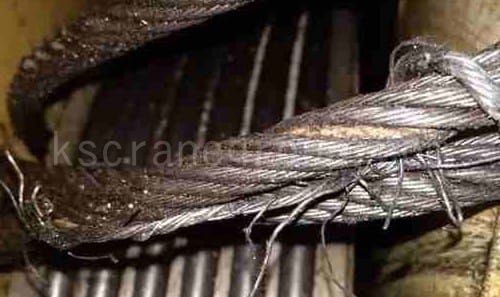
ข. การเสียรูปของลวดสลิง สาเหตุหลักของการเสียรูปคือ ลวดสลิงเสียรูปเนื่องจากความยุ่งเหยิงที่เกิดจากการยกเอียง และไม่มีตัวนำเชือก ลวดสลิงจึงถูกบีบและเสียรูป สิ่งนี้ต้องการให้เราปฏิบัติตามกฎระเบียบอย่างเคร่งครัดและควรติดตั้งตัวนำเชือก
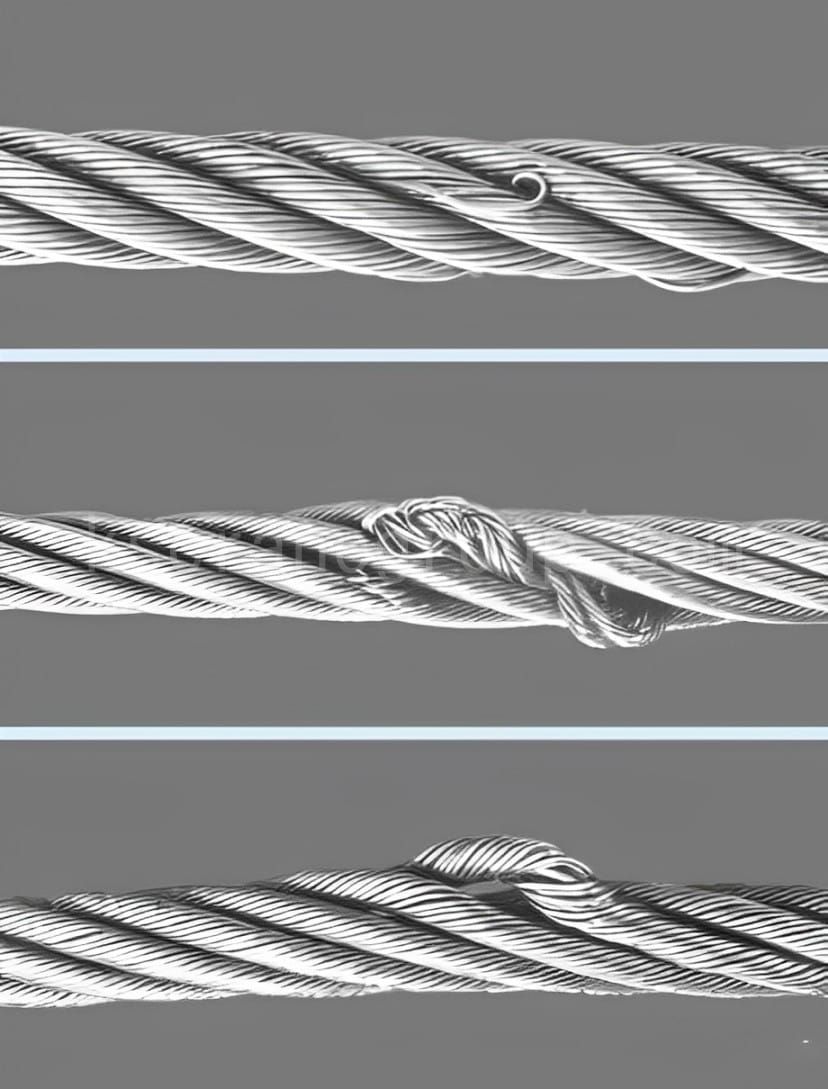
c. ลวดสลิงถูกตัดขาด โดยหลักแล้วตัวจำกัดการยกไม่สามารถดึงออกได้ ยกเกินกำลังเกินไปและลวดสลิงถึงมาตรฐานปลายอายุการใช้งานแล้วและยังคงใช้งานอยู่ การยกเพื่อหลีกเลี่ยงอุบัติเหตุอันเนื่องมาจากลวดสลิงถูกตัดขาด ตามข้อบังคับการยกอย่างเคร่งครัด ลวดสลิงถึงมาตรฐานปลายอายุการใช้งานจะต้องเปลี่ยนใหม่ในเวลา หากตัวจำกัดทำงานผิดปกติ ให้ดึงออก ให้ซ่อมแซมหรือเปลี่ยนตัวจำกัดทันที
บทสรุป
การผลิตเครื่องยกไฟฟ้าที่ล้มเหลวมักทำให้ต้องมีการวิเคราะห์ ตัดสิน และเสนอมาตรการและแนวทางปฏิบัติในการปรับปรุงครั้งใหญ่ ซึ่งช่วยเพิ่มความสามารถในการรับมือกับอุบัติเหตุและประสิทธิภาพได้อย่างมาก ทำให้จำนวนอุปกรณ์ที่ล้มเหลวลดลงอย่างมาก อัตราการกำจัดอุปกรณ์ลดลงทุกปี อุปกรณ์ที่ตรงตามมาตรฐานอัตราความสมบูรณ์เพิ่มขึ้นทุกปี ลดภาระงานของบุคลากร ประหยัดกำลังคนและทรัพยากรวัสดุได้มาก และปรับปรุงประสิทธิภาพทางเศรษฐกิจขององค์กร
เหตุใดจึงควรเลือกเครน Kuangshan
Kuangshan Crane เป็นแบรนด์ชั้นนำในอุตสาหกรรม โดยจำหน่ายเครนประสิทธิภาพสูงที่เป็นไปตามมาตรฐานสากล เช่น FEM, CMAA, ISO เป็นต้น ซึ่งใช้กันอย่างแพร่หลายในหลายอุตสาหกรรม เช่น เหล็ก พลังงาน การต่อเรือ โลจิสติกส์ การผลิต เป็นต้น Kuangshan Crane เป็นหนึ่งในแบรนด์ชั้นนำในอุตสาหกรรม ผู้ผลิตเครนเหนือศีรษะ 10 อันดับแรกของโลกและได้รับความไว้วางใจจากลูกค้าทั่วโลกด้วยความแข็งแกร่งทางเทคนิคที่ยอดเยี่ยม ประสบการณ์ด้านอุตสาหกรรมที่หลากหลาย และคุณภาพผลิตภัณฑ์ที่โดดเด่น ไม่ว่าจะเป็นเครนมาตรฐานหรือโซลูชันอุตสาหกรรมที่ปรับแต่งได้สูง Kuangshan Crane นำเสนอตัวเลือกที่ดีที่สุดสำหรับธุรกิจของคุณ เพิ่มผลผลิตและรับรองการดำเนินการยกที่ปลอดภัยและเชื่อถือได้!
คุณชอบสิ่งที่เราทำไหม?แบ่งปัน
แท็ก: รอกไฟฟ้า,รอกไฟฟ้าเสีย






























































